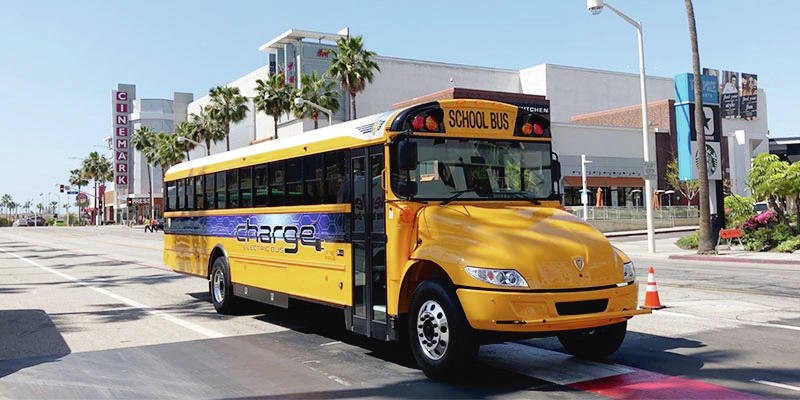Seatbelts are being installed in two new Nanaimo-Ladysmith school buses under a pilot program to make travelling safer for children across Canada.
The three-point seatbelts, along with other safety equipment, are going into the 76-passenger buses to evaluate how to better protect youngsters are they go to and from school and head out on field trips.
A recent federal task force report came out with recommendations to make school buses safer.
Recommended upgrades going into new buses, set to arrive at the Nanaimo-Ladysmith school district in January, will be evaluated by Transport Canada.
The project costs $902,000, including buses and charging stations because the vehicles will be all-electric. Main funders are the federal and provincial governments and the Association of School Transportation Services of B.C.
Seatbelts are not typically used in school buses or in many other types of buses, but the issue is timely.
It was highlighted when two 18-year-old UVic students died in fall 2019 after a coach bus — not a school bus — crashed on the gravel logging road between Port Alberni and Bamfield during a field trip.
New safety precautions announced by the university this year include wearing seatbelts.
Some believe that seatbelts would have helped when a tour bus rolled over in the Columbia Icefield in Jasper National Park in July, resulting in three deaths and injuries to 14 others. Documents supporting a class action suit note the coach did not have seatbelts.
The federal pilot project is for school buses only.
Every school day, more than 50,000 school buses carry about 2.2 million children to and from school and on activities. This adds up to about 792 million student trips annually across Canada, the task force report said.
In the past decade, there has been one school-age fatality in a school bus, the report said.
The number of school bus passenger deaths since 1984 accounts for less than one per cent of all motor vehicle related fatalities involving school children in Canada.
“Even with this excellent safety record, there is room for improvement,” it said.
Three-point seatbelts, when installed correctly and worn properly, “can offer an additional layer of safety by reducing the risk of ejection and lowering the risk of serious injury,” it said.
School buses are the safest way to transport children to and from school, according to the task force.
“That is because school buses are built — inside and out — to protect children.”
Data will be collected from the new buses on the effectiveness of safety features including seatbelts, extended stop arms, and interior and exterior cameras.
Nanaimo-Ladysmith school district is already using two buses fitted with seatbelts. Every year, one or two new buses come into the 25-bus fleet to replace aging vehicles.
“Internally the district went that direction to determine its efficacy and whether we would go that route for all our buses,” said secretary-treasurer Mark Walsh.
The incoming school district buses will be all-electric.
This “helps the district move towards our goal of environmental stewardship and sustainability,” district chair Charlene McKay said.
The electric buses are expected to save the district $20,000 a year in fuel and maintenance.
Every year, the district spends about $140,000 on gas and diesel for its fleet.
If the fleet is replaced with electric vehicles over 10-plus years, “then we are looking at multiple hundreds of thousands of dollars of operating budget that is able to go back into schools because of the fuel savings,” Walsh said.
cjwilson@timescolonist.com
